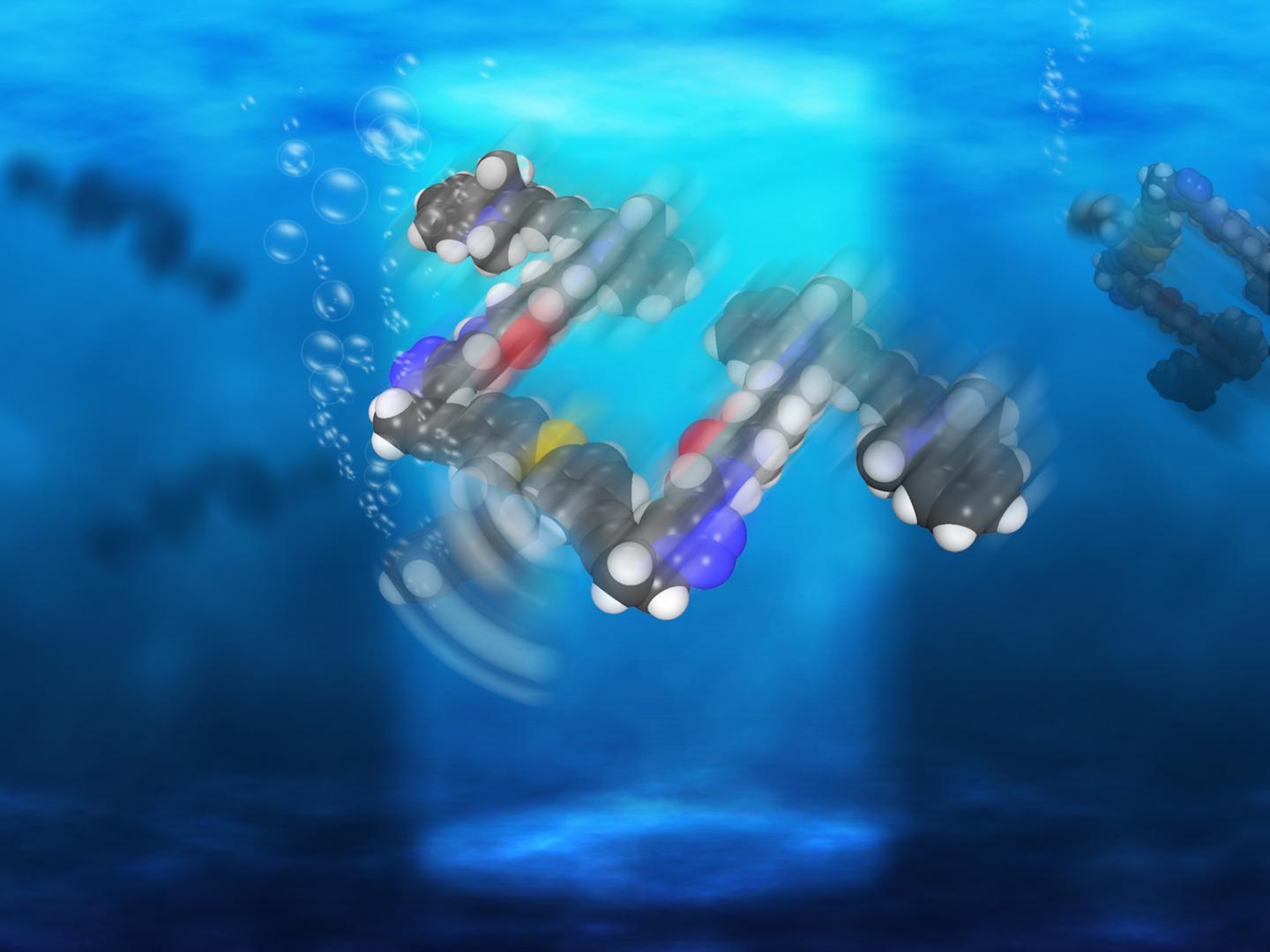Researchers from Rice University have created a tiny single-molecule, 244-atom submarine that has a motor powered by ultraviolet light.
With each full revolution, the motor’s tail-like propeller moves the sub forward 18 nanometers. Since the motors run at over one million rotations per minute, the nanosub proves to be pretty speedy.
Even though the sub’s top speed amounts to less than 1 inch per second, researchers from the university say that that’s a breakneck pace on the molecular scale.
“These are the fastest-moving molecules ever seen in solution,” said James Tour, a chemist from the Rice Lab.
The researchers reported that their light-driven nanosubmersibles show an “enhancement in diffusion” of 26%, which means the subs diffuse, or spread out, much faster than they already do due to Brownian motion, the random way particles spread in a solution.
The subs cannot yet be steered, but the study shows that molecular motors are powerful enough to drive the sub-10-nanometer subs through solutions of moving molecules of about the same size.
“This is akin to a person walking across a basketball court with 1,000 people throwing basketballs at him,”said Tour.
This isn’t the first time Tour and the Rice team experimented with molecular machines. About 10 years ago, his lab introduced the world to nanocars, single-molecule cars with four wheels, axles and independent suspensions that could be “driven” across a surface.
They aren’t even the only ones to create microscopic machines with motors over the years, but most have either used or generated toxic chemicals.
The newly developed motors operate like a bacterium’s flagellum and complete each revolution in four steps. Once they are excited by light, the double bond that holds the rotor to the body becomes a single bond, allowing it to rotate a quarter step. As the motor tried to return to a lower energy state, it jumps adjacent atoms for another quarter turn. This process repeats as long as the light is on.
Once they built the motors, the team worked with Gufeng Wang at North Carolina State University to measure how well the nanosubs moved.
“We had used scanning tunneling microscopy and fluorescence microscopy to watch our cars drive, but that wouldn’t work for the submersibles,” said Tour. “They would drift out of focus pretty quickly.”
The eam from North Carolina State University sandwiched a drop of diluted acetonitrile liquid containing a few nanosubs between two slides and used a custom confocal fluorescence microscope to hit it from opposite sides with both ultraviolet light (for the motor) and a red laser (for the pontoons).
Rice’s researchers hope future nanosubs will be able to carry cargoes for medical and other purposes. “There’s a path forward,” said García-López, Rice University graduate student. “This is the first step, and we’ve proven the concept. Now we need to explore opportunities and potential applications.”



Comments are closed, but trackbacks and pingbacks are open.